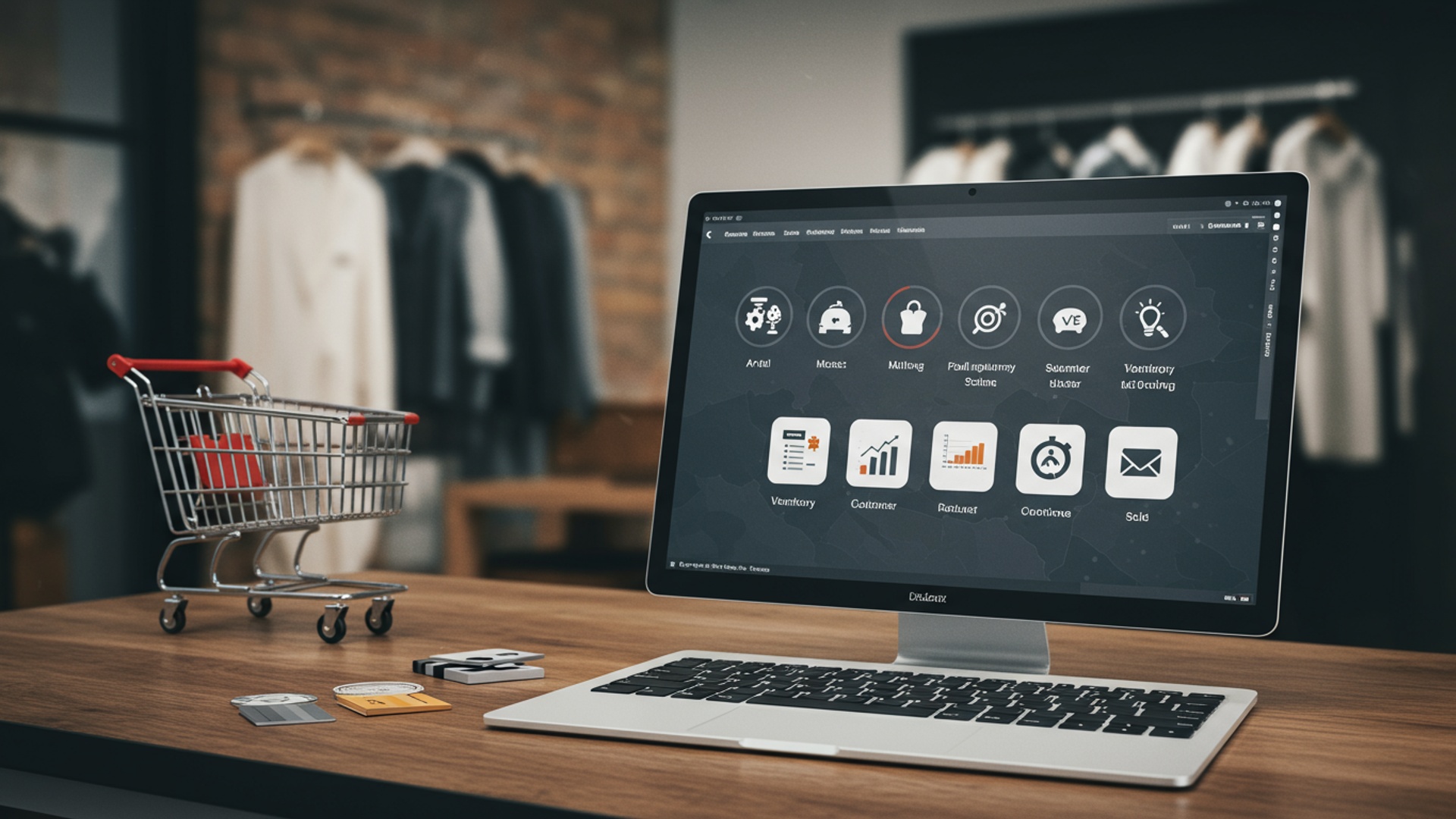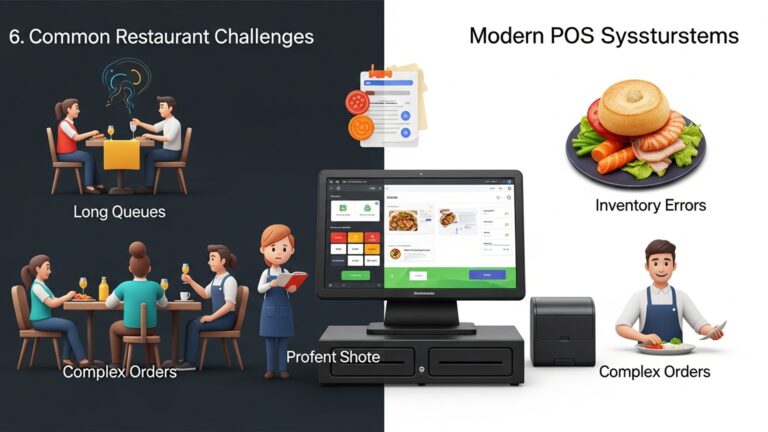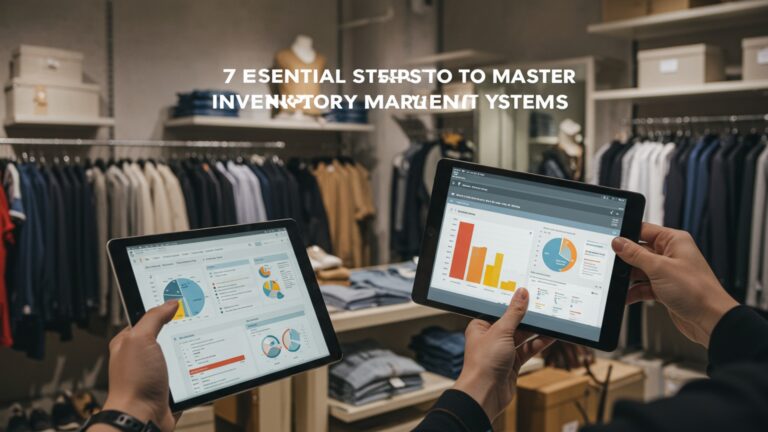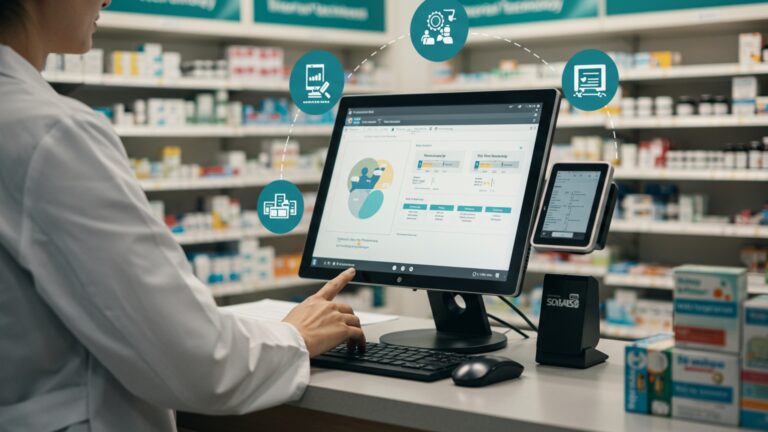7 Essential Features Your Apparel Store Billing Software Needs to Succeed
In today’s fiercely competitive retail landscape, apparel businesses demand more than just transactional efficiency; they require a strategic operational backbone to thrive. Outdated systems, prone to inventory discrepancies and slow checkout processes, actively hinder customer satisfaction and sales, especially during peak seasons like holiday rushes. The right apparel store billing software transcends basic point-of-sale functions, integrating crucial capabilities like real-time stock management across multiple channels, personalized customer loyalty programs. seamless support for diverse payment methods, including modern tap-to-pay options. This sophisticated integration is no longer a luxury but a fundamental necessity, empowering retailers to deliver the fluid, data-driven shopping experiences modern consumers expect.

Seamless Inventory Management Integration
For any apparel business, managing inventory is a complex dance of sizes, colors, styles. seasons. Your apparel store billing software isn’t just for processing transactions; it needs to be the central nervous system for your stock. A truly essential feature is deep, real-time integration with your inventory management system. This means that every sale, return, or exchange processed at the point of sale (POS) instantly updates your stock levels across all channels.
Without this integration, businesses face critical challenges:
- Stock Discrepancies
- Inefficient Restocking
- Time-Consuming Processes
Manual updates or disconnected systems inevitably lead to inaccurate stock counts, causing overselling or underselling. Imagine a customer wanting a specific size of a popular dress, only for the system to show it’s available while the physical stock is depleted. This leads to customer frustration and lost sales.
Without clear visibility into what’s selling and what’s not, ordering becomes guesswork. Integrated billing software provides data-driven insights, allowing you to reorder popular items proactively and avoid carrying dead stock.
Employees spend valuable time manually reconciling sales with inventory, taking them away from serving customers or other productive tasks.
When evaluating apparel store billing software, prioritize solutions that offer robust, real-time, two-way integration with dedicated inventory modules or popular standalone inventory systems. Ask about their API capabilities and how data flows between the billing and inventory components.
Multi-Channel Sales and Omnichannel Support
The modern apparel consumer doesn’t shop in just one place. They browse online, try on in-store, buy through social media, or even pick up orders placed elsewhere. Your apparel store billing software must be equipped to handle this multi-channel reality, providing a unified omnichannel experience. This feature ensures that whether a customer buys a shirt in your physical boutique, adds a pair of jeans to their cart on your e-commerce site, or uses a mobile app for purchase, all transactions and customer data are synchronized.
Key components of multi-channel support include:
- Centralized Customer Data
- Unified Inventory View
- Click-and-Collect (BOPIS – Buy Online, Pick Up In Store)
- Ship-from-Store Capabilities
A single customer profile that captures purchase history, preferences. interactions across all touchpoints.
As mentioned, real-time stock levels accessible from both online and offline sales channels.
Seamless processing of online orders for in-store pickup, a growing convenience for customers.
Allowing store associates to fulfill online orders directly from local store inventory, improving delivery times and optimizing stock utilization.
A leading retail expert, Sarah Jenkins, once noted, “The future of retail isn’t just multi-channel; it’s omnichannel. Customers expect fluidity. their loyalty follows brands that deliver it.” Your billing software is the backbone of this fluidity.
Comparison: Traditional vs. Omnichannel Billing
| Feature Aspect | Traditional Billing System (Store-Centric) | Omnichannel Apparel Store Billing Software |
|---|---|---|
| Customer Data | Fragmented; separate records for in-store and online. | Unified 360-degree customer profile across all channels. |
| Inventory Management | Often siloed; separate stock for physical store and e-commerce. | Real-time, synchronized inventory across all channels. |
| Transaction Processing | Limited to in-store sales; complex manual reconciliation for online. | Seamless processing of in-store, online. mobile transactions. |
| Customer Experience | Inconsistent; loyalty programs or returns may not transfer between channels. | Consistent and personalized experience regardless of shopping channel. |
Integrated Customer Relationship Management (CRM) Capabilities
In the competitive apparel market, customer loyalty is gold. Your apparel store billing software should do more than just ring up sales; it should help you build lasting relationships. Integrated CRM features allow you to capture, store. leverage valuable customer data directly from the point of sale.
This includes:
- Purchase History Tracking
- Loyalty Programs
- Customer Segmentation
- Personalized Communication
Knowing what customers bought, when. at what price. This informs personalized recommendations. For instance, if a customer frequently buys business casual wear, your system can prompt recommendations for new arrivals in that category.
Easily enroll customers, track points, manage rewards. redeem discounts directly within the billing process. This incentivizes repeat purchases.
Grouping customers based on spending habits, preferences, or demographics for targeted marketing campaigns. Imagine sending an exclusive discount on winter wear to customers who purchased coats last season.
Using collected data to send tailored emails, SMS messages, or offers, enhancing the customer experience and driving engagement.
A well-integrated CRM within your billing software transforms a simple transaction into an opportunity for engagement and retention. It’s about understanding your customer beyond just the sale.
Robust Reporting and Analytics
Data is the compass for business success. An effective apparel store billing software provides comprehensive reporting and analytics capabilities that turn raw transaction data into actionable insights. This feature empowers you to make informed decisions about inventory, marketing, staffing. overall business strategy.
Look for reporting that covers:
- Sales Performance
- Inventory Turnover
- Customer Insights
- Employee Performance
- Return and Exchange Analysis
Detailed reports on daily, weekly, monthly. seasonal sales, broken down by product, category, employee. store location. Identify your best-selling items and peak sales periods.
grasp which items are moving quickly and which are sitting on shelves, helping you optimize stock levels and reduce carrying costs.
Reports on customer spending habits, average transaction value, repeat purchase rates. the effectiveness of loyalty programs.
Track individual sales metrics, commissions. productivity, allowing for better training and performance management.
grasp common reasons for returns, identifying potential issues with product quality or sizing.
For example, analyzing sales data might reveal that your “limited edition” graphic tees sell out within hours of release, indicating a strong demand for exclusive drops. Conversely, a high return rate on a particular size of jeans might signal a supplier issue or a need to adjust sizing guides.
Prioritize software that offers customizable dashboards and the ability to export data in various formats for deeper analysis. The easier it is to extract and interpret data, the more effectively you can steer your apparel business.
Flexible Payment Options and Secure Processing
In today’s diverse payment landscape, your apparel store billing software must support a wide array of payment methods to cater to every customer’s preference. Restricting payment options can directly lead to abandoned carts and frustrated in-store shoppers. Beyond variety, security is paramount.
Essential payment features include:
- Credit and Debit Card Processing
- Mobile Payments
- Digital Wallets
- Buy Now, Pay Later (BNPL) Services
- Gift Cards and Store Credit
- PCI DSS Compliance
Seamless integration with major payment gateways (e. g. , Stripe, Square, PayPal) to accept all popular card types.
Support for contactless payments like Apple Pay, Google Pay. other NFC-enabled options, which are increasingly popular for speed and convenience.
Integration with platforms like PayPal, Venmo, or local digital wallets relevant to your market.
Offering options like Afterpay, Klarna, or Affirm can significantly boost sales, especially for higher-ticket apparel items, by making purchases more accessible.
Manage your own branded gift cards and easily process store credit for returns.
Ensure the software and its integrated payment processors adhere to the Payment Card Industry Data Security Standard to protect sensitive customer financial insights. Non-compliance can lead to severe penalties and loss of customer trust.
A real-world application: A customer finds the perfect designer jacket. it’s a significant purchase. Offering a BNPL option through your billing software allows them to spread the cost, turning a potential lost sale into a confirmed transaction. This flexibility is a powerful sales tool.
Efficient Returns and Exchange Management
Returns are an inevitable part of the apparel retail experience. Clothing and accessories often have higher return rates due to sizing, fit, or style preferences. Your apparel store billing software must simplify and streamline this process, turning a potential negative customer experience into an opportunity for continued loyalty.
Key features for returns and exchanges:
- Quick Lookup of Past Transactions
- Automated Inventory Adjustment
- Flexible Return Options
- Return Policy Enforcement
- Reason for Return Tracking
Easily find the original sale by receipt number, customer name, or item details to verify purchase.
When an item is returned, the system should automatically add it back to inventory (if sellable) or mark it for defect/disposal, preventing manual errors.
Process refunds to the original payment method, issue store credit, or facilitate exchanges for different sizes/colors effortlessly.
The software can be configured to enforce your return policies (e. g. , within 30 days, with tags, etc.) , guiding staff through the process and ensuring consistency.
Capture data on why items are being returned. This valuable feedback can inform product development, sizing guides, or marketing strategies.
Consider a scenario where a customer wants to exchange a shirt bought online for a different size in-store. An efficient apparel store billing software allows the associate to quickly locate the online order, process the exchange. update inventory and customer records in one smooth operation, enhancing customer satisfaction.
Employee Management and Permissions
Your team is on the front lines, interacting with customers and processing transactions. The apparel store billing software needs robust employee management features to ensure accountability, security. efficient operations. This means controlling who can access what and tracking individual performance.
Essential aspects include:
- Role-Based Access Control
- Individual Employee Accounts
- Commission Tracking
- Activity Logs
- Time Management
Assign different levels of permissions based on employee roles (e. g. , cashier, store manager, owner). A cashier might only be able to process sales and returns, while a manager can access reports, modify prices, or manage employee schedules. This protects sensitive business data and prevents unauthorized actions.
Each employee should have a unique login, allowing the system to track their sales performance, discounts applied. clock-in/out times.
For sales-driven apparel businesses, the ability to automatically calculate and track commissions based on individual sales is invaluable. This saves significant administrative time and ensures accurate payouts.
Maintain a detailed log of employee actions within the software, providing an audit trail for security and troubleshooting.
Some advanced systems offer integrated time clock functionalities, simplifying payroll processing.
This feature not only enhances security by limiting access to critical functions but also provides valuable insights into team productivity. For example, by tracking individual sales, you can identify top performers who might be ideal for training new staff or managing specific product categories.
Conclusion
Choosing the right billing software for your apparel store is far more than a transactional decision; it’s an investment in your brand’s future. As we’ve explored, robust features like dynamic size-color matrix management, seamless omnichannel integration. insightful sales analytics are non-negotiable in today’s fast-paced retail landscape. My personal tip? Don’t just look at the price tag; envision how the software will streamline your busiest holiday rush or help you identify slow-moving stock before it becomes a liability. A truly effective system empowers you to make data-driven decisions, anticipate trends. ultimately, enhance the customer experience, turning first-time buyers into loyal patrons. By embracing software that grows with you, like those capable of handling complex promotions or offering real-time inventory synchronization across multiple channels, you’re not just processing sales; you’re building a resilient, efficient. profitable apparel business. So, take action now: evaluate your current setup and explore solutions that promise not just efficiency. a competitive edge. Your apparel store’s success hinges on it. How to Select the Perfect POS Software for Your Retail Business Needs
More Articles
Mastering Cloud Based POS Software How to Boost Your Business Efficiency
5 Essential Strategies to Master Clothing Inventory Management Systems
How to Select the Perfect POS Billing Software for Your Business
Unlock Efficiency 8 Vital Multi Outlet Clothing POS System Tips for Success
FAQs
Why can’t I just use a basic billing system for my apparel store?
Generic systems often miss critical features specific to apparel, like managing inventory by size, color. style, handling seasonal collections, or robust customer loyalty programs. Specialized software is built to tackle these unique retail challenges.
What kind of inventory features are crucial for a clothing shop?
You definitely need software that tracks inventory by multiple attributes like size, color. fabric type. It should also help with tracking stock levels across different store locations, managing variants. automating reorder points to prevent popular items from selling out.
How does this software help me keep customers loyal?
Good billing software includes features for customer relationship management (CRM). This means you can track purchase history, manage loyalty points, issue gift cards. even segment customers for targeted promotions, all of which encourage repeat business.
Can it make returns and exchanges less of a headache?
Absolutely. Essential software simplifies the entire process of returns, exchanges. store credit. It quickly pulls up original transaction data, verifies the item’s eligibility. processes the refund or new sale smoothly, making it a breeze for both staff and customers.
What payment options should the software support?
It should be flexible enough to handle a variety of payment methods, including cash, credit/debit cards, mobile payments, digital wallets. even split payments. Offering diverse options makes shopping more convenient for your customers.
Why are detailed sales reports so crucial for my store?
Robust reporting gives you actionable insights. You can see which items are best-sellers, identify peak sales hours, track employee performance. comprehend customer buying patterns. This data is vital for making smart inventory decisions and planning effective promotions.
Is it hard to train my staff on new billing software?
Not if you pick the right one! The best apparel store billing software is designed with user-friendliness in mind. Look for intuitive interfaces and straightforward workflows that minimize training time and help your team process transactions quickly and accurately.





